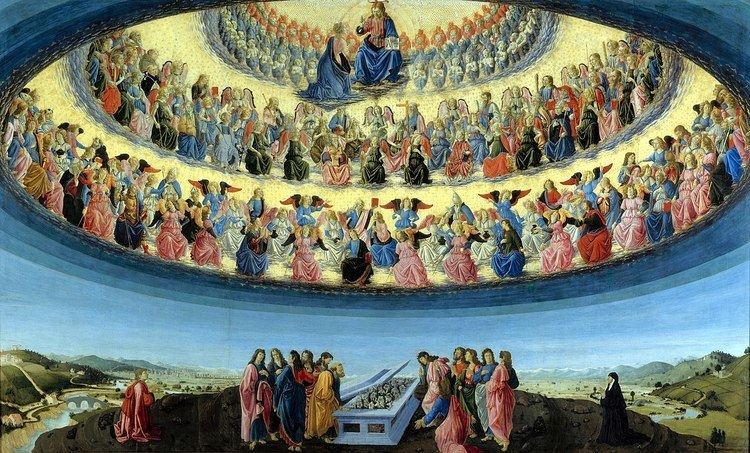 | ||
A hierarchy of angels is a belief or tradition found in the angelology of different religions, which holds that there are different levels or ranks of angels. Higher ranks may be asserted to have greater power or authority over lower ranks, and with different ranks having differences in appearance, such as varying numbers of wings or faces.
Contents
Abrahamic faiths
The Jewish angelic hierarchy is established in the Hebrew Bible, Talmud, Rabbinic literature, and traditional Jewish liturgy. They are categorized in different hierarchies proposed by various theologians. For example, Maimonides, in his Mishneh Torah or Yad ha-Chazakah: Yesodei ha-Torah, counts ten ranks of angels.
The most influential Christian angelic hierarchy was that put forward by Pseudo-Dionysius the Areopagite in the 4th or 5th century in his book De Coelesti Hierarchia (On the Celestial Hierarchy). During the Middle Ages, many schemes were proposed, some drawing on and expanding on Pseudo-Dionysius, others suggesting completely different classifications. According to medieval Christian theologians, the angels are organized into several orders, or "Angelic Choirs".
Pseudo-Dionysius (On the Celestial Hierarchy) and Thomas Aquinas (Summa Theologica) drew on passages from the New Testament, specifically Ephesians 1:21 and Colossians 1:16, to develop a schema of three Hierarchies, Spheres or Triads of angels, with each Hierarchy containing three Orders or Choirs.
There is no standard hierarchical organization in Islam that parallels the Christian division into different "choirs" or spheres, and the topic is not directly addressed in the Quran. However, it is clear that there is a set order or hierarchy that exists between angels, defined by the assigned jobs and various tasks to which angels are commanded by God. Some scholars suggest that Islamic angels can be grouped into fourteen categories, with some of the higher orders being considered archangels.
There is also an informal Zoroastrian angelic hierarchy, with specific angelic beings called yazatas having key positions in the day-name dedications on the Zoroastrian calendar.
Role-playing games
Angels are occasionally presented in role-playing games as having ordered hierarchies, within which higher level angels have more power and the ability to cast more spells or exercise other magical abilities. For example, Angels in Dungeons & Dragons, a subgroup of the beings called Celestials, come in three different types, the progressively more powerful Astral Deva, Planetar, and Solar.
